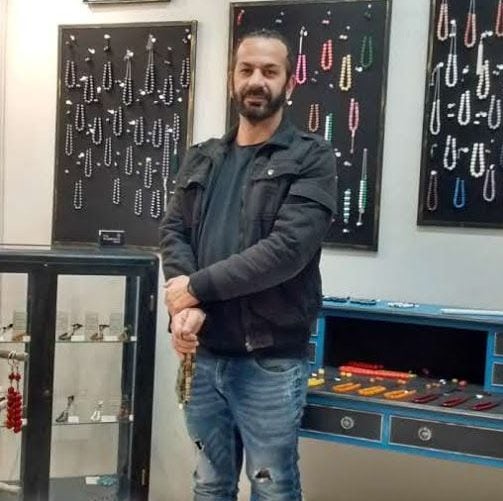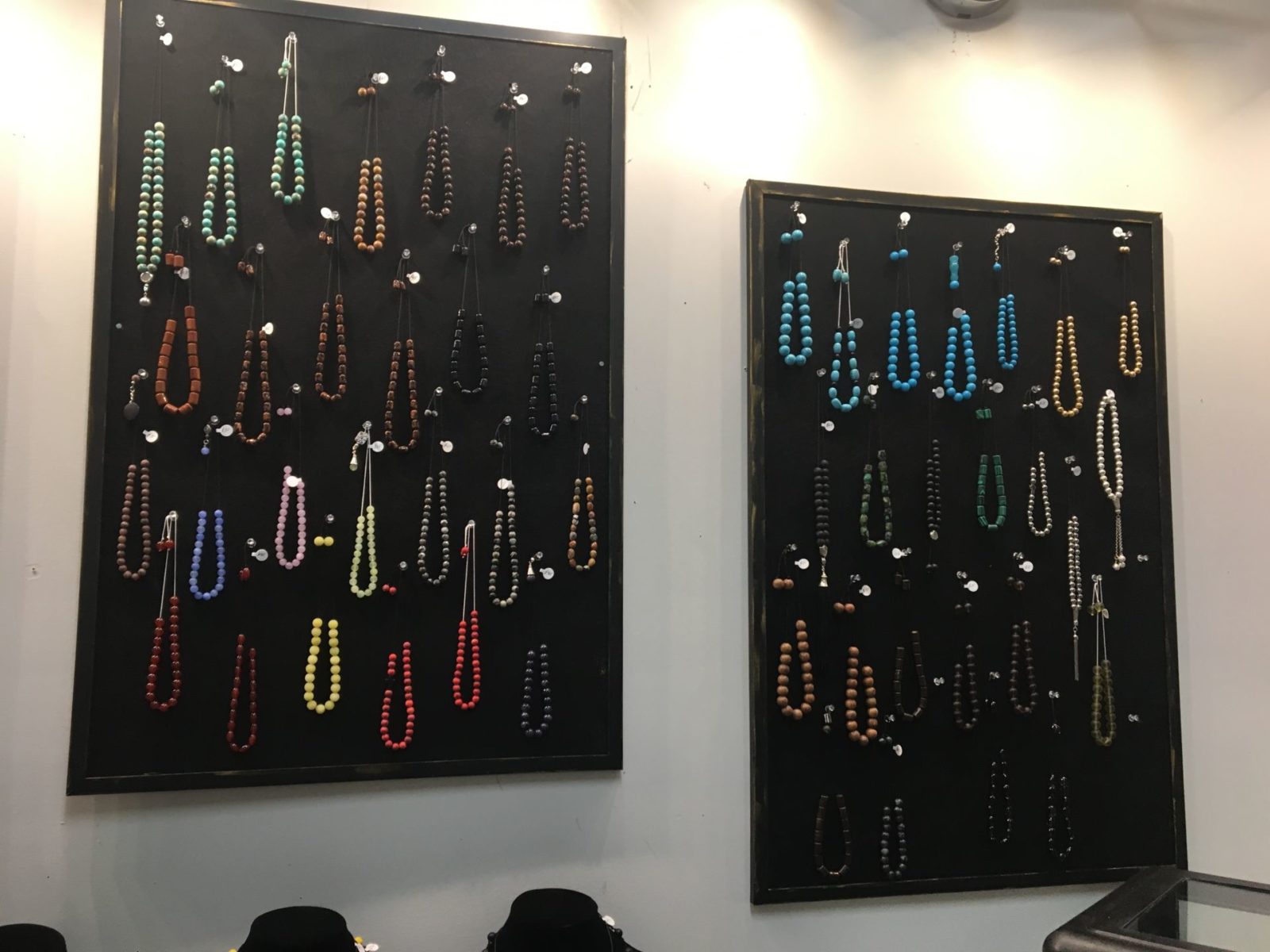“I will do away with the watch
And I will get a komboloi,
So I can count the sorrows
and the sighs.
Song “Roloi, Komboloi”, debut singer Grigoris Bithikotsis
Not the grand Monastiraki flea markets in the heart of Athens, but in the Monastiraki group of shops in the heart of Melbourne’s famous Greek precinct, in Oakleigh.
Jon Lambousias,42, opened The Komboloi Shop, the first and only komboloi boutique in Melbourne at Eaton Mall, because he wanted to keep the ancient tradition of komboloi-making alive.
“I like to help bring it back,” he told Neos Kosmos.
“Ensuring one of our traditions doesn’t get lost.”
Mr Lambousias said there was an air of mystery around the komboloi that also had a practical purpose.
“There is a mystique to an object that has been around for a long while,” he said.
“It’s also a handy little accessory to pass time.”
READ MORE: Nafplion: Greece’s best kept secret is out

Lambousias, shows off his komboloia, in his, The Komboloi Shop, Oakleigh. Photo: Dora Houpis

Komboloi

Mr Lambousias shows one of his komboloi.
Mr Lambousias was born and raised in Melbourne to Greek parents. He lives in the Melbourne south-eastern suburb of Oakleigh and has travelled to Greece many times, staying for long periods in Athens.
He opened his boutique komboloi shop in Oakleigh last September. Before that, he had a career in finance for 10 years.
Mr Lambousias said he handmade the komboloi on site and also to order. He has 250 to 300 komboloi on display in his shop.
They range from the novelty komboloi for cars and keyrings, to wall hanging komboloi, bracelets and the most popular, the begleri which is a small skill toy of one or more beads at either end of a short string or fine chain. By contrast, the actual komboloi usually consists of 16 to 20 beads.
Mr Lambousias said he made komboloi using common-known materials like resin, semi-precious stones, sea glass,amber and pearl, but also used more exotic materials.
There is the exotic yusuri, a black coral from the Mediterranean, as well as bull horn and camel bone from Egypt.
Mr Lambousias said his favourite material was Baltic amber, tree resin from the Baltic Sea eco-region which is millions of years old.
READ MORE: Travels to Greece: The magic of the Pelion Peninsula
He said the art of making the komboloi was not only an old man’s craft as he saw young people, like him, in Athens make them.
Mr Lambousias said the komboloi was for all age groups to enjoy and encouraged people to experience its unique feel and sound.
“Just swing it around,” he said.
HISTORY OF THE KOMBOLOI
The komboloi has historically been associated with prayer.
The Hindus were the first to string beads together and use them for counting prayers around 700BC.
In the third century in Greece, the monastic community of Mt Athos, was the first place known to have used “beads”. Monks tied knots at intervals on a thick cord to count their prayers.
These “knotted strings” became known as komboskini. They opened the way for the creation of the Greek komboloi.
Now an object of pleasure and not prayer, the modern day komboloi is said to have come about during the Turkish Ottoman occupation of Greece, between 1453 and to 1821.
The komboloi did fall out of favour during various periods after Greek Independence, but it is said to have been revived after the 1920s with the Asia Minor catastrophe that saw the influx of refugees coming to Greece.
The komboloi is now tossed to wile away one’s troubles and time, as well as collected, exhibited, gifted and of course sung about.
Θα το δώσω το ρολόι
Και θα πάρω κομπολόι
Να μετράω τους καημούς
Και τους αναστεναγμους
From the song “Ρολοι, Κομπολόι”
Facts about worry beads
- Worry beads are a string of beads manipulated with one or two hands and used to pass time in Greek and Cypriot culture. They have no religious purpose.
- The word κομπολόι is derived from κόμβος “knot” + -λόγιο “collection”. It is sometimes said that “in every knot I say a prayer”. This etymology accounts for the fact that κομπολόι evolved from κομποσκοίνι, the Greek word for prayer rope.
- Komboloi have an odd number of beads (one more than a multiple of four eg. 4×4 + 1 or 5×4 + 1 and so forth, or they are a prime number such as 17, 19 or 23. The head bead is known as παπάς (priest) and the θυρεός is the shield that separates two threads which helps the beads to flow freely. The tassel is usually two palm widths.
- Many well-known Greeks were users and collectors of worry beads eg. former prime minister Andreas Papandreou, Greek tycoon Aristotle Onassis
- Worry beads can be made of any type of beads, however amber, amber resin (faturan) and coral are preferred because they are more pleasant to handle than metal or minerals.

Different uses
- For relaxation, and to pass the time, similar to a fidget spinner
- To guard against bad luck
- Something to do with your hands in order to quit smoking
- Expensive worry beads made of silver and amber are a mark of social prestigeMany prominent Greeks were users and collectors of worry beads, including former Prime Minister Andreas Papandreou and business magnate Aristotle Onassis.
How to handle worry beads
There are two ways to ‘play’ with worry beads. The ‘quiet’ method is most appropriate for use indoors as it allows the user to start at one end of the chain of beads and pull each thread forward using the thumb. This is repeated until all beads have been tipped so that the user can start again. The ‘loud’ method is to divide the beads into two groups and to swing them up and forward, making a noise. This is appropriate for outdoor use.









